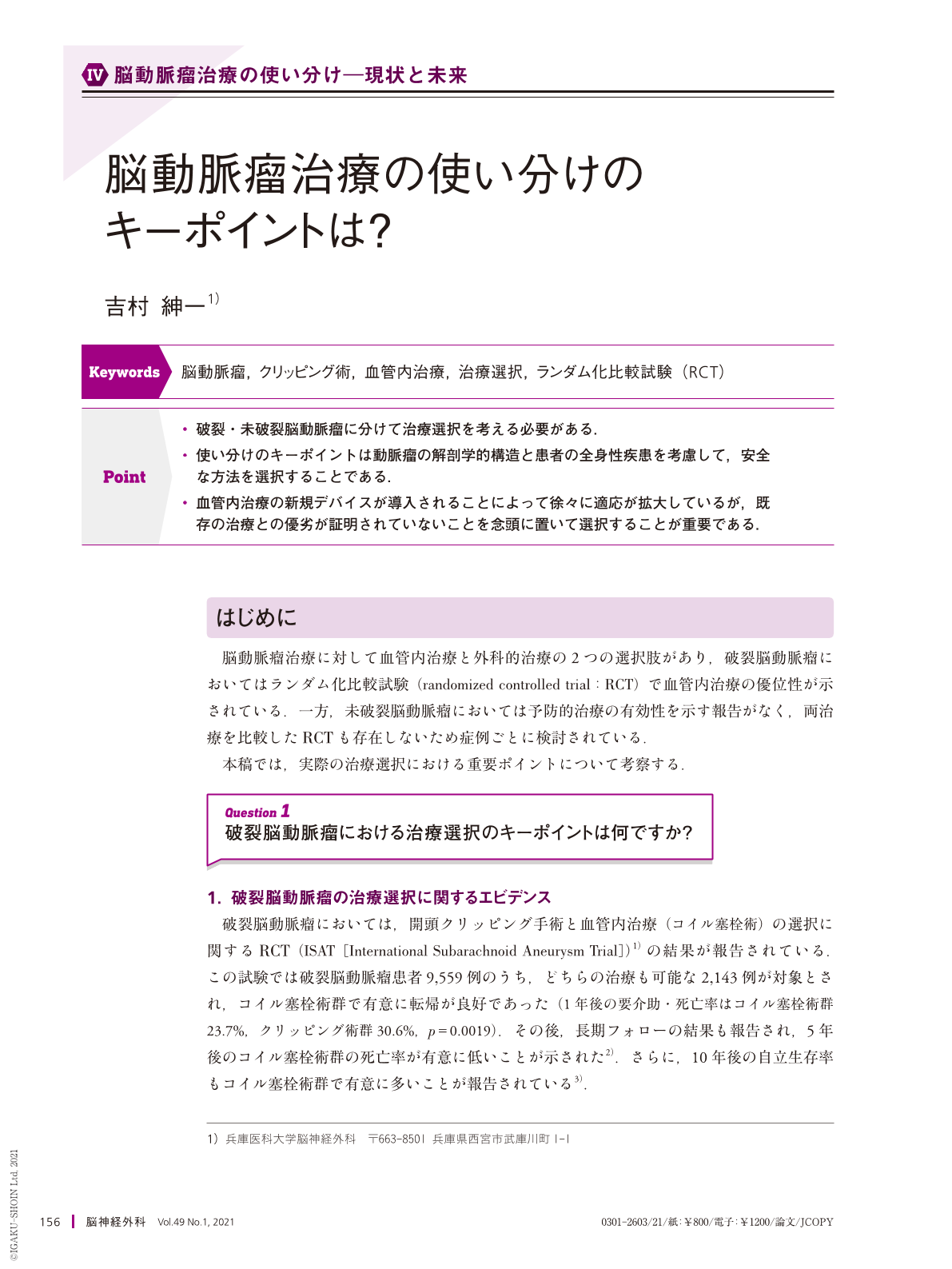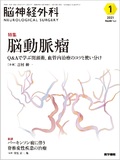Japanese
English
- 有料閲覧
- Abstract 文献概要
- 1ページ目 Look Inside
- 参考文献 Reference
Point
・破裂・未破裂脳動脈瘤に分けて治療選択を考える必要がある.
・使い分けのキーポイントは動脈瘤の解剖学的構造と患者の全身性疾患を考慮して,安全な方法を選択することである.
・血管内治療の新規デバイスが導入されることによって徐々に適応が拡大しているが,既存の治療との優劣が証明されていないことを念頭に置いて選択することが重要である.
Currently, two treatment options are available for cerebral aneurysms: clipping and endovascular therapy(EVT). For patients with a ruptured aneurysm, superiority of endovascular coiling was reported by a randomized controlled trial(RCT). Therefore, it is important to know whether the patient has high risk factors for undergoing EVT. In addition,Also, we should know unavailability of adjunctive devices such as stents for ruptured cases. On the other hand, no RCT has reported the efficacy of clipping or EVT or compared treatment options for unruptured aneurysms. Therefore, the indication of treatment for unruptured cases is decided in a case-by-case manner according to the estimated rupture rate of the aneurysm based on data from large registries and institutional treatment complication rates. Introduction of various adjunctive devices such as stents, flow diverters, and bifurcation devices has widened indications of EVT for unruptured aneurysms. However, some patients are still at high risk for undergoing EVT despite the introduction of these devices. Since the superiority of these new devices has not been proven compared to traditional treatments, treatment should be carefully selected by taking aneurysmal and systemic factors into account.

Copyright © 2021, Igaku-Shoin Ltd. All rights reserved.


